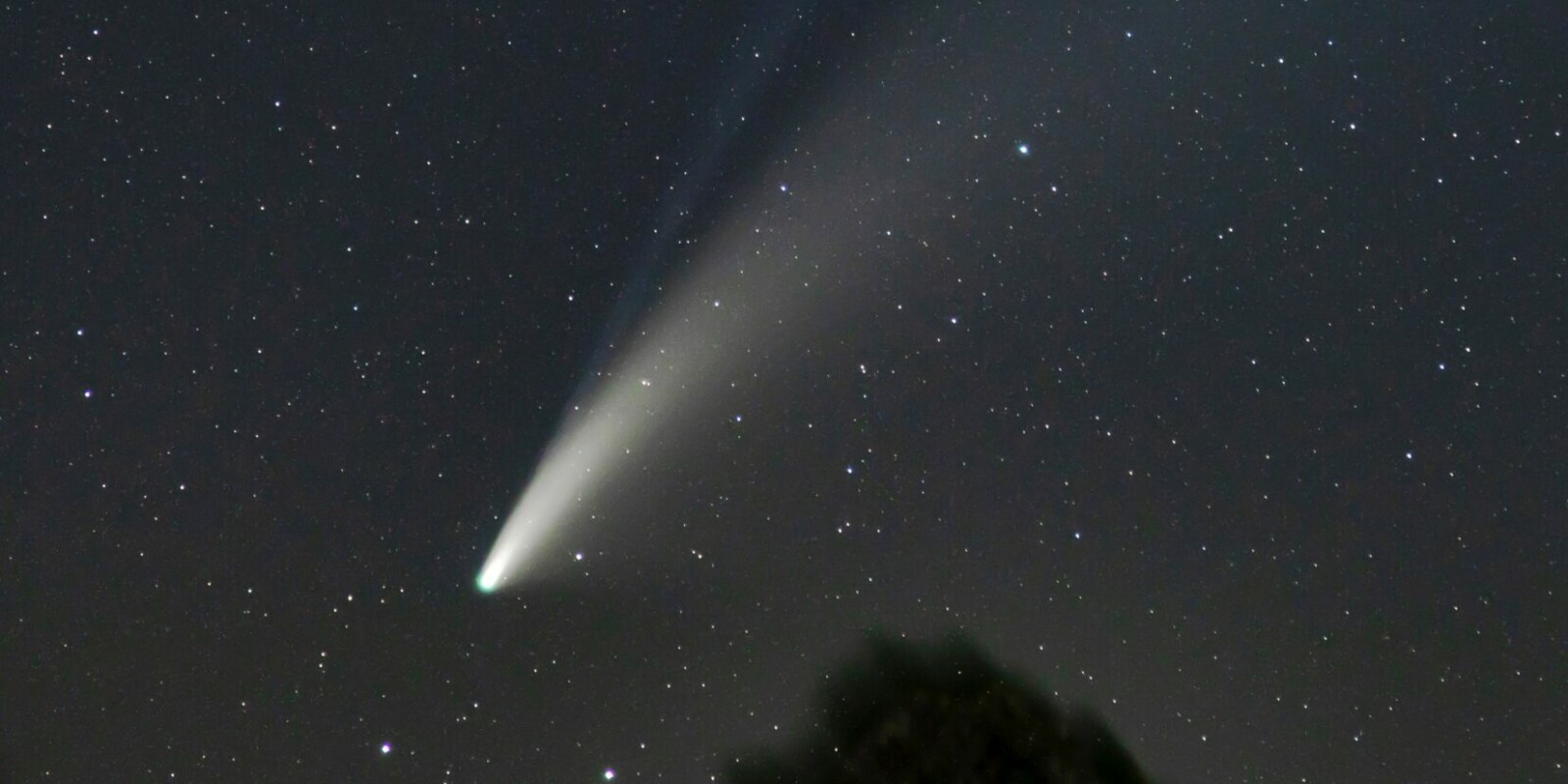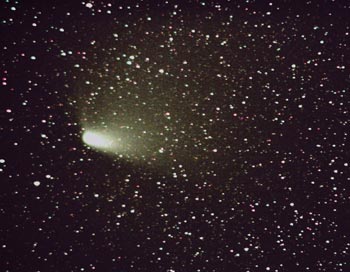Comets
Comets are among the oldest objects in the solar system. Composed of rock and ice, they generally go around the Sun in narrow elliptical orbits which may stretch well beyond the orbit of dwarf-planet Pluto.

Most of the time comets are too small to be seen, but that changes as they approach the Sun when they can become quite spectacular. Some comets appear on predictable schedules (like Halley’s comet) while others show up for the first time. When comets appear, the Observatory provides viewing guidance and shares spectacular imagery. Observatory public telescopes always highlight comets when they are in view.



Comet PANSTARRS C/2011 L4, imaged from the San Gabriel Mountains (near Mt. Wilson) between 4:30 a.m. and 5:00 a.m. on April 19, 2013. The picture shows the comet’s broad, fanlike dust tail spreading for several million miles away from the sun.
Multiple guided exposures were combined, resulting in an exposure of 4 minutes, 30 seconds. A Canon 20Da was used at ISO 1200 through a 5.5-inch diameter f/3.5 Celestron Comet-Catcher Schmidt-Newtonian telescope. (Image by Anthony Cook, Griffith Observatory).
- Comet PanSTARRS C/2013 X1 was visible during evening hours in July, 2016.
- Comet LINEAR 252/P was visible during early morning hours in April, 2016.
- Comet Lovejoy C/2014 Q2 was visible during evening hours in January, 2015.
- Comet Lovejoy C/2013 R1 was visible before dawn in December, 2013.
- Comet ISON skimmed the sun’s surface in late November, 2013.
- Comet Lemmon C/2012 F6 was visible in May, 2013.
- Comet PANSTARRS was visible in March, 2013.
For information on comets that may presently be visible to amateur astronomers, visit Weekly Information on Bright Comets.
Past Comet Observations

Tracking Comet NEOWISE, July-August 2020
In July 2020, the Observatory provided observing guidance for the arrival of Comet Neowise, which definitely lived up to its billing.

Tracking Comet Atlas, April 2020
In July 2020, Griffith Observatory provided observing guidance for the arrival of Comet Neowise, which definitely lived up to its billing.

Comet Lovejoy C/2014 Q2, January 2015
From January 6 - 24, 2015, Griffith Observatory offered visitors a telescopic view of Comet Lovejoy, C/2014 Q2. The comet orbits the sun about every 14,000 years. It was closest to Earth – 44 million miles away – on January 7, 2015.

Comet ISON, Autumn 2013
Comet ISON (C/2012 S1) was discovered on 21 September 2012 by Vitali Nevski and Artyom Novichonok while collecting data for the International Scientific Optical Network (ISON).

Comet PANSTARRS, March 2013
Comet PANSTARRS was observed from Griffith Observatory through telescopes and binoculars through most of March 2013.

Catch That Comet! Chasing Comet Hartley!
Join speakers Malcolm Hartley and Tim Larsen for an evening of discussion about the excitement of comet hunting, the mysteries of the solar system's oldest denizens, and the upcoming flyby of Comet Hartley.